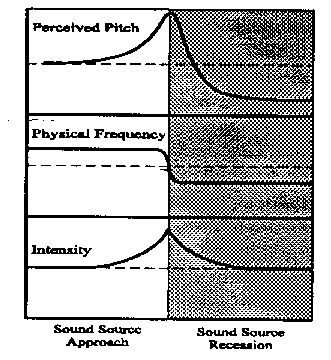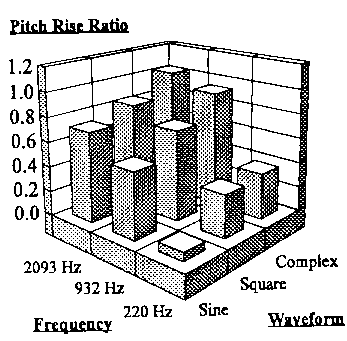| The Doppler effect refers
to the change in frequency that occurs at a point of observation as a moving
sound source passes that point. A familiar example may be the pitch change
heard in a train's horn as it passes a crossing or an ambulance as it passes
on the street. Three studies were performed to illustrate and explain a
new auditory illusion associated with the Doppler effect.
Study one was a survey that confirmed the existence of a popular belief that the pitch of an approaching sound source rises, even though its physical frequency at the point of observation falls. The fact that this belief has worked itself into the literature with seemingly no physical explanation for the phenomena is further evidence that the belief is widespread. Study two confirmed that subjects presented with simulated Doppler shifted stimuli actually perceive a pitch rise, so the belief was not due to an error in memory. These results demonstrate that a rise in pitch can be experienced under various conditions of falling frequency. Specifically, a Doppler shifted tone in which there is no rise in frequency can produce an illusory rise in pitch. We therefore refer to this perceived rise in pitch as the "Doppler Illusion." Wave form complexity and frequency range were found to significantly affect the magnitude of the illusion. |

As the sound source approaches, perceived pitch rises while physical frequency remains constant, then falls. The rate of change in intensity may affect judgments about changes in pitch. |
